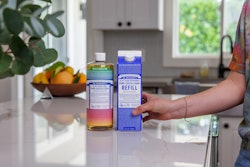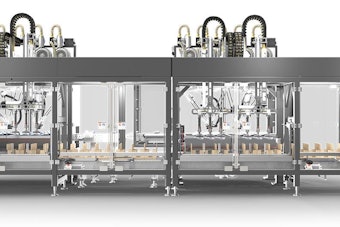Recalls of food or consumer packaged goods (CPG), even if they don't directly threaten the health of consumers, can still damage brand image, customer relationships, sales, shelf space and revenues. Yet many risks can be very hard to spot if you're not looking specifically for them in their hiding places in handling materials, product, packages and cartons across the supply chain.
In addition to allergens, mislabeling and mixed-labeling issues—see related story "How to prevent food labeling mixups"—mold, chemical migration and off-odors/tastes figured prominently in a panel discussion on a broad set of recall risks.
Rob Osborn, senior packaging compliance scientist with Wm. Wrigley Jr. Co., cited a recall of roughly 28 million boxes of Kellogg's cereal based on reports of off-odors. "Sales were down for several weeks [and] affected the entire cereal industry," he said.
Sometimes the cure can seem as bad as the problem: Facing complaints of a musty smell on pain relievers, both Johnson and Johnson and Pfizer in 2010 investigated and ultimately blamed a chemical treatment applied to wooden pallets intended to prevent mold.
Chemical migration
Such incidents have driven Wrigley, to do more exhaustive work to prevent a broader set of packaging related risks. Did you know there are at least 13 distinct components in a pack of Wrigley's Orbit gum? These fall in four categories:
- Envelope: Over lacquer, printing inks, paperboard, adhesive
- Bellyband: Aluminum foil, laminating adhesive, paper
- Gum wrapper: printing inks, paper, wax coating
- Overwrap: Plastic film, printing inks, tear tape
The complexity of packaging even a simple product lead Osborn and others to present the analytical testing, regulations and standards that can prevent chemical migration from the package from adversely affecting the product.
For all packages, panelists presented a still broader selection of materials and components to consider:
Plastic resins: Used in the manufacture of rigid plastic containers and/or plastic films
Paper/paperboard: Used in wrappers, cartons, envelopes, cases and more.
Metals: Used to make cans, tins, wrappers and other containers.
Glass: used for primary packaging.
Printing inks/lacquers: used for various packaging types.
Colorants: Used in coloring plastic packaging.
Adhesives: In laminates, packaging seals and closures.
Coatings: Both direct and indirect contact.
Laminates: Two or more flexible materials adhering to one another.
Osborn and other panelists cited the need for suppliers to understand the uses of the product they're providing so for example, a dairy product might have greater microbiological sensitivity, while a microwavable package will have different heating-related considerations. Still others require packaging material suppliers to guarantee that materials are stored within a specified room-temperature range.
The presence or migration of BPA (bisphenol A), pthalates or phthalate esters and other "fear factor" chemicals is another issue. Some chemicals used in packaging can be harmful, other's not. But questions remain, such as how far must a company go to remove them in order to claim "BPA free?" and how much testing is required. Certainly, these issues cannot be solved in an hour-long presentation—or article.
Broad perspective for testing
To address risks across these materials, food packaging experts presenting at a Pack Expo educational session reviewed some of the major risks and best practices. Steps include implementing a battery of questionnaires covering packaging materials; printing inks; and coatings, waxes and adhesives, which , which in turn lead to a full material assessment, review and benchmark for best practices covering areas including:
- Usage of packaging materials from used foodstuff to storage conditions.
- Specific components including BPA (bisphenol A), BADGE (bisphenol-A diglycidyl ether (BADGE), animal-derived ingredients, etc.
- Restricted components and REACH (The EC Regulation No 1907/2006 for the Registration, Evaluation, Authorization and Restriction of Chemicals) to better manage substances of concern to regulators and customers.
- Allergen assessment, from peanuts to latex and beyond, incorporating allergen standards in different countries.
- Compliance with all of the above must naturally be carried out with sensitivity to country-by-country requirements.
Once standards are in place, companies can test finished packaging in areas that include the possibilities for chemical migration, taint (off-odor or taste), stability in terns of shelf life and storage conditions and physical safety.
Ultimately it's up to the brands to be responsible for its packages and the performance of suppliers, noted Eric F. Greenberg, Chicago-based attorney and author of the Guide to Packaging Law. Each company has its own obligation to comply, he explained; how far you take your risk management program "just depends on how much you want to protect your brand."
Debra Krug-Reyes, food safety and quality auditing principal at ConAgra Foods, agreed; Suzanne Matuszewski, manager for global sustainability and regulatory compliance with Graham Packaging, York, PA., added that working closely with suppliers is "just part of the job."
The food panelists strongly recommended the Food Safety Alliance for Packaging, or FSAP, a technical committee of Institute of Packaging Professionals, for assistance. More information is available from the organization as well as Packaging World's 2012 Food Safety Playbook, a free, 81-page PDF guide to food safety compliance for packaging machines, materials and methods.



















